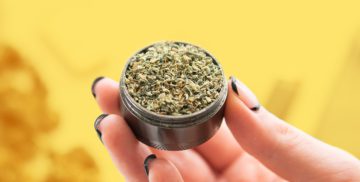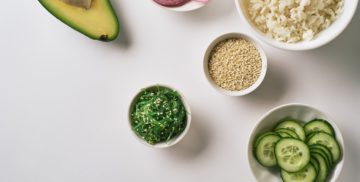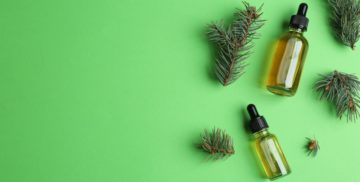Hemp is, without a doubt, the world’s most versatile, multifaceted and multi-talented plant. In the greatest of ironies, it too shares the achievement of being the most underused and underutilised of all plants.
It has been used by civilisations for thousands of years and we only stopped using hemp in the early 20th century when for nefarious reasons it was made illegal, which by “coincidence” allowed the petrochemical industry to take over.
In 1937, only months prior to prohibition, the influential American magazine ‘Popular Mechanics’ stated that hemp was going to be a billion-dollar crop. Today investment banks are now saying the same thing again but this time as the world exits prohibition.
Below is but a small compilation of the number of uses hemp has. We are confident that by the end you might just see hemp as the answer to all our environmental and societal problems.
Medicine & Recreation
The hemp plant was part of the American pharmacopoeia up until the late 1800s and was noted as medicine for rheumatism, asthma, tremors, coughing, migraines, cramps, and depression.
The flowers of the hemp plant have sticky resinous glands that contain some of the over 400 identified compounds. They are namely cannabinoids, terpenes and flavonoids. The most well-known cannabinoid THC is famous for producing high-like effects but has also been shown to kill cancer cells in vitro studies.
CBD has no euphoric like effects but is linked to numerous medicinal properties namely reducing seizures, anxiety, pain, and inflammation. Like its cousin THC, it too has been shown to kill cancer cells in vitro studies.
Textiles
Up until the 20th-century when prohibition occurred, hemp fibres from the stalk of the plant were used to make 80% of all textiles and fabrics for clothes, tents, blankets, linens, rugs, towels, diapers and so on.
Thankfully nowadays hemp clothes are having a revival with Levi Strauss releasing a new line of hemp jeans in March of 2019 followed by fashion designer and project runway star Korto Momolu showcasing her latest hemp line in New York fashion week in September 2019.
Hemp is ethically better for the environment and safer for workers. It has a complex molecular makeup making it antimicrobial, breathable, biodegradable, environmentally friendly and above all comfortable. It is lighter, softer, stronger and more ethical than cotton.
Paper
Up until 1883, 75% – 90% of the world’s paper was made with hemp as it contains cellulose, the main critical ingredient for paper making. More recently hemp paper was used to make the first two drafts of the American Declaration of Independence, the Gutenberg Bible, Mark Twain’s novels, Lewis Carroll's Alice in Wonderland and so much more.
One of the reasons the Chinese were so advanced for centuries compared to the Western world is because they had a wealth of knowledge recorded on hemp paper. This allowed them to accumulate knowledge, refine and pass on.
Hemp paper can be made to be strong and long-lasting for everyday paper or soft and brittle to be used as toilet paper, kitchen towels and such uses. By choosing hemp paper we can save the forests so trees can go back to giving animals and plants a home and us fresh oxygen.
Food
Hemp seeds are a complete superfood and have been used for centuries by people to maintain a healthy diet. The oil that can be pressed from the seeds contains an abundance of nutrients but most notably a perfect ratio of essential fatty acids omega 3 and 6.
Apart from the oil, the seeds themselves are highly nutritious and are one of the most protein-dense foods in the world comparable to soybeans. They are also high in dietary fibre, vitamins and minerals.
Fuel
Hemp can be used as biomass to fuel our energy needs. This biomass can then be converted to methane, methanol or gasoline. When compared to fossil fuels this would end acid rain and greenhouse gases. This biomass does not contain dangerous sulphur and when hemp is grown it sequester CO2 from the air thereby balancing out any CO2 emitted from burning it.
Related Article: Hemp Plastic Vs Plastic
Soil
Our soils are being destroyed by artificial synthetic chemicals such as pesticides, herbicides, and inorganic fertilisers. The ground is lacking nutrients and is covered in heavy metals.
When hemp is grown its roots return nutrients to the soil all the while removing heavy metals and toxins in a process known as phytoremediation.
Hempcrete
Hempcrete are blocks that are used for building houses and buildings. They are made from hemp hurds mixed with lime and have numerous benefits. They maintain a steady temperature, are breathable, don’t crack, they gain in strength over time and hold onto that CO2.
Conclusion
Hemp is very much the obvious choice if we truly want to see a real transformation in the world. It can provide food, clothing, shelter, fuel and everything else we need to not only survive but to thrive.
The recent passing of the farm bill together with movements worldwide will see an enormous increase in hemp being grown and with it more jobs, a better way of living, and maybe, just maybe, a diversion from the imminent ecological and environmental disaster we all face.
















